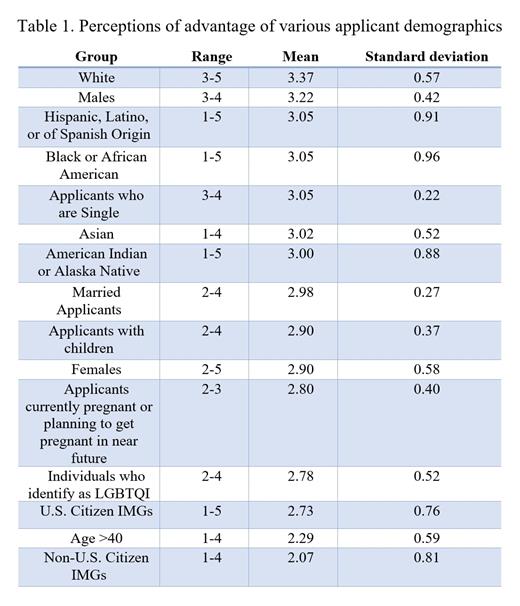Abstract
Background
The National Institutes of Health define African Americans or Blacks, American Indians, Alaska Natives, Hispanics or Latinos, Native Hawaiians, and other Pacific Islanders as being underrepresented in medicine. A number of studies have demonstrated that improving diversity of such underrepresented demographics within the medical profession improves patient outcomes, medical education and reduces health disparities in patients from vulnerable racial or socioeconomic groups. Despite this recognition, significant underrepresentation of various racial, ethnic, and sexual identities still exists within nearly all medical specialties.
Aims
The purpose of this study was to a gain a greater understanding of the current state of diversity, equity, and inclusion (DEI) efforts among U.S. hematology and medical oncology fellowship training programs. We explored the perspectives of adult and pediatric fellowship program directors regarding current recruitment strategies and suggestions for improvement to help mitigate the effects of implicit and explicit bias. Here, we present an interim analysis of the data using descriptive statistics.
Methods:
We convened a multi-institutional collaboration of fellowship program directors, teaching faculty, and staff members of the American Society of Hematology to develop a survey examining perceptions of DEI efforts among hematology and medical oncology fellowship program directors. The survey was pilot tested in a small group of program directors representing 6 different academic programs (5 adult, 1 pediatric). The final online survey was distributed via email to 224 fellowship program directors at U.S. adult and pediatric hematology and medical oncology fellowship programs. The survey included 29 questions regarding perspectives on bias within the fellowship selection process, current DEI initiatives, and current faculty and fellow demographics. Survey respondents were asked to rate the importance of numerous factors in determining which applicants to invite utilizing a scale of 0-10, with 0 and 10 representing lowest and highest importance, respectively. To measure program director perceptions of certain applicant groups, survey respondents were asked to rate applicant demographics as being advantaged/disadvantaged based on survey options ranging from 0-5, with 0 and 5 representing very disadvantaged and very advantaged, respectively.
Results:
At interim analysis, 41 of 224 program directors completed the survey for an interim response rate of 21%, including 25 adult program directors and 16 pediatric program directors, with representation from university and community programs. Of the program directors surveyed, 28 (68%) reported having access to a dedicated diversity committee or DEI policies in place to improve recruitment of underrepresented applicants. In determining which applicants to invite, respondents placed highest value on the applicant's program director letter (mean score ± standard deviation: 7.44±1.93), caliber of the applicant's residency program (7.28±2.06) and letters of recommendations (7.15±2.23). Survey respondents viewed white and male applicants as representing the most advantaged demographic group, while LGBTQI, age>40, and U.S. citizen and non-citizen international medical graduates were the most disadvantaged (Table 1). Suggestions regarding improving DEI in the fellowship selection process included implementing bias training, identifying potentially disadvantaged applicants in ERAS, increasing faculty diversity, and pairing underrepresented applicants with interviewers based on applicant preference.
Conclusion:
While the majority of hematology and medical oncology fellowship program directors report having DEI programs or policies to improve recruitment of underrepresented applicants, perceptions of advantaged/disadvantaged groups may extend beyond demographics traditionally viewed as being underrepresented in medicine. As our survey is ongoing, we plan to reanalyze our data when the survey has been finalized with a higher response rate utilizing multivariable regression to identify themes that may further improve DEI efforts within the fellowship selection process.
LaCasce: Bristol-Myers Squibb Company.: Other: Data Safetly and Monitoring. Murphy: North American Thrombosis Foundation: Honoraria. Naik: Rigel: Research Funding. Podoltsev: Pfizer: Honoraria; Blueprint Medicines: Honoraria; Incyte: Honoraria; Novartis: Honoraria; Celgene: Honoraria; PharmaEssentia: Honoraria; Bristol-Myers Squib: Honoraria; CTI BioPharma: Honoraria.


